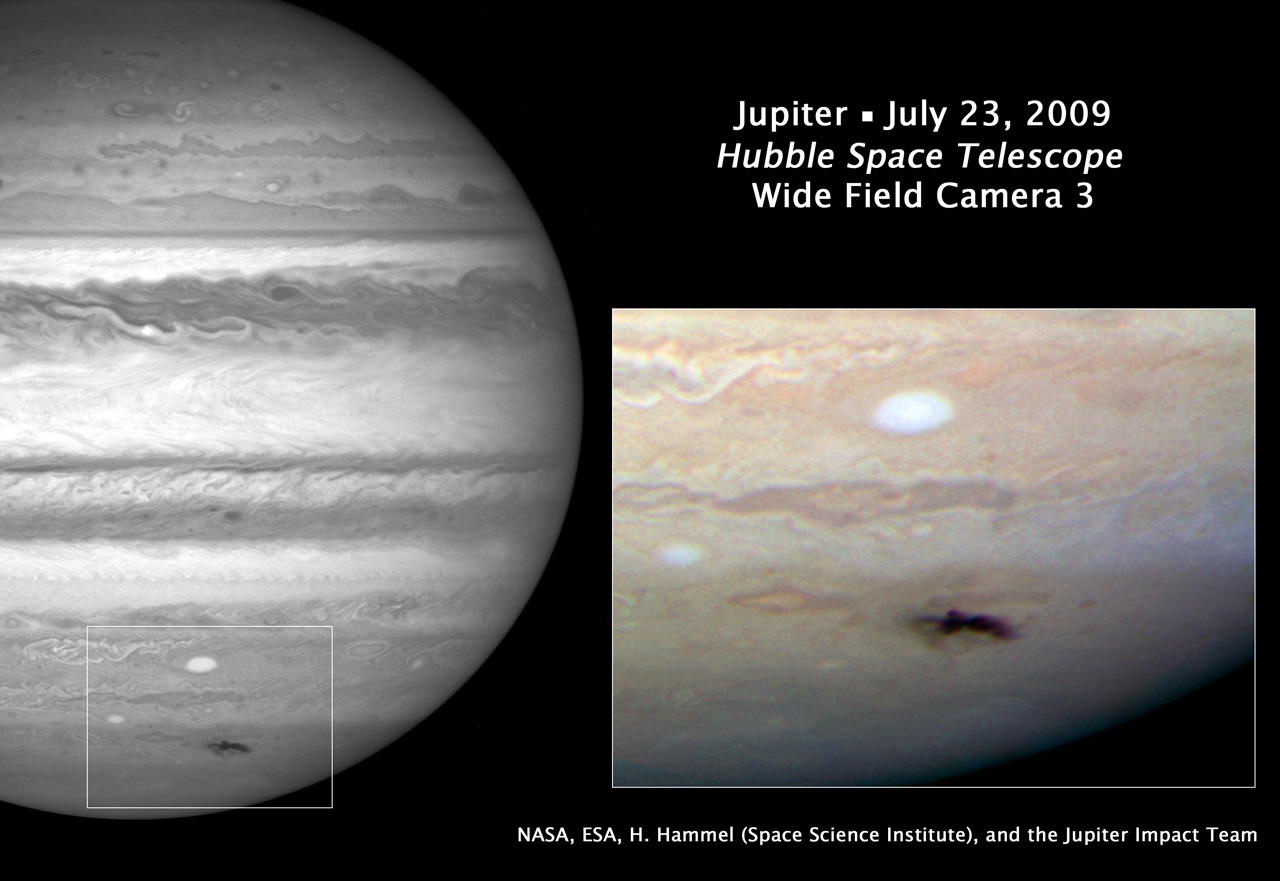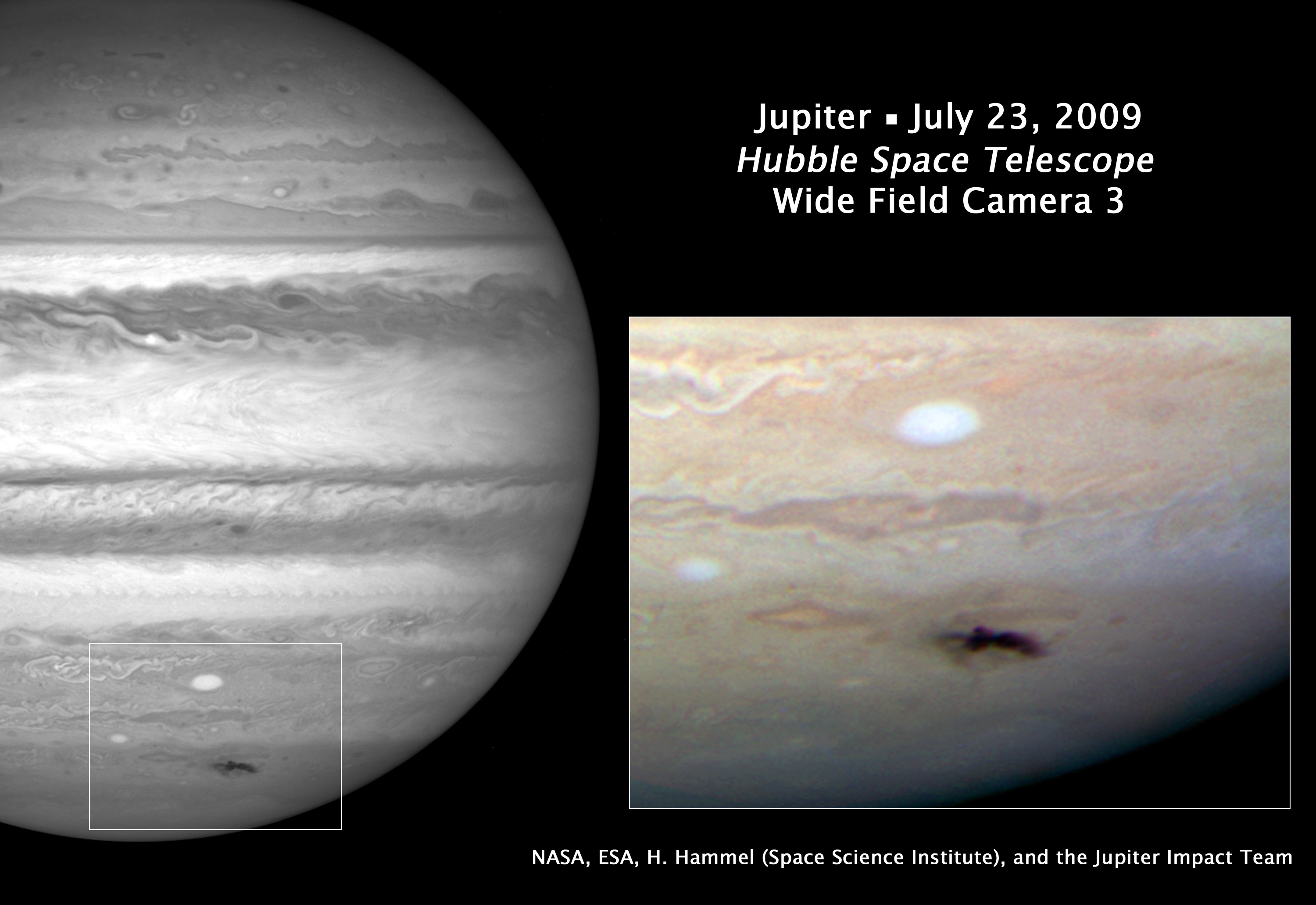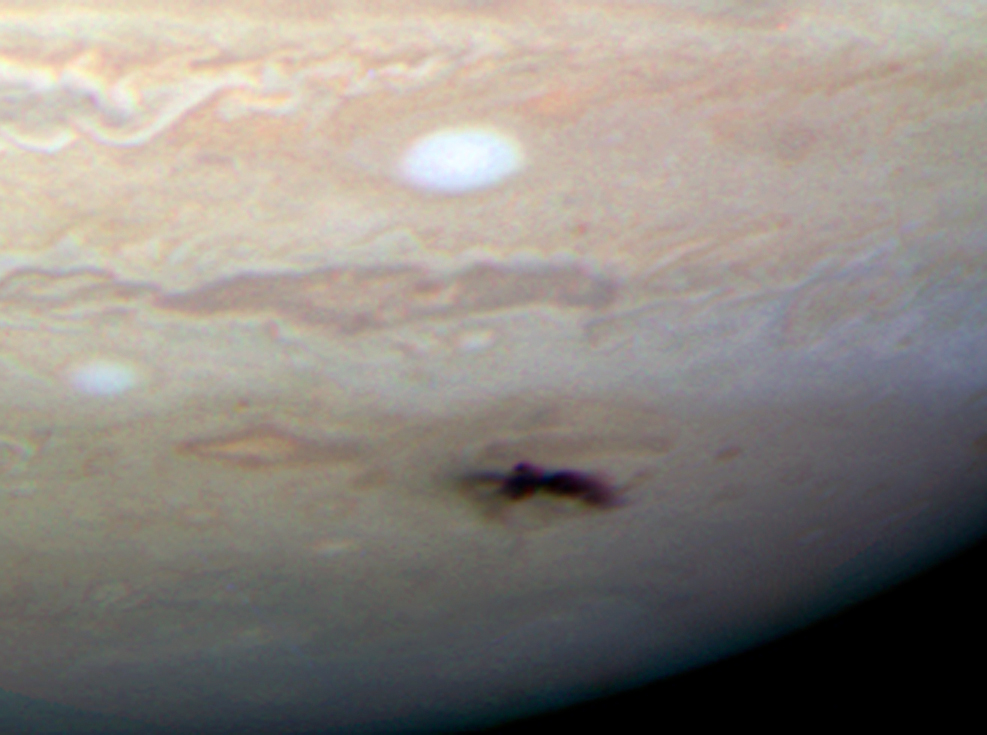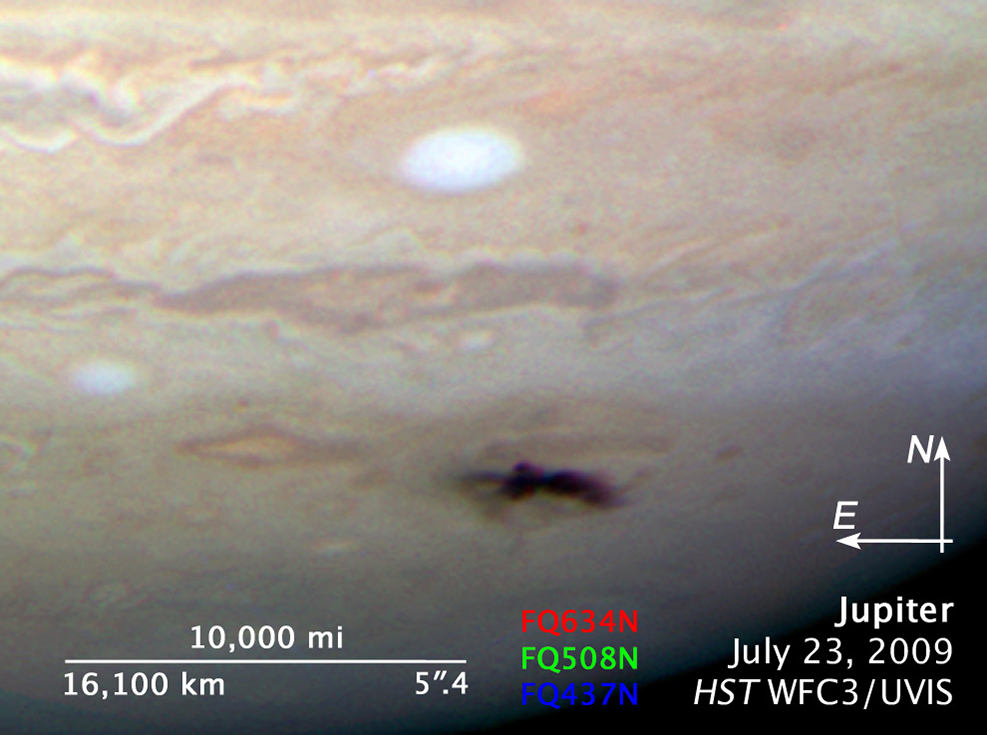Comet or Asteroid Impact on Jupiter (2009)

| Credit | NASA, ESA, and H. Hammel (Space Science Institute, Boulder, Colo.), and the Jupiter Impact Team |
|---|---|
| Historical Date | July 24, 2009 |
| Language |
|
This Hubble picture, taken on July 23, 2009 is the sharpest visible-light picture taken of an impact feature spotted on Jupiter in 2009. The expanding spot is twice the length of the United States.
First discovered by Australian amateur astronomer Anthony Wesley, the feature is the impact site and "backsplash" of material from a small object that plunged into Jupiter's atmosphere and disintegrated.
The first time scientists observed planetary impact was in 1994 when a series of fragments from comet Shoemaker-Levy 9 smashed into Jupiter. The details seen in the Hubble view shows lumpiness in the debris plume caused by turbulence in Jupiter's atmosphere.
The impactor is estimated to be the size of several football fields. The force of the explosion on Jupiter was thousands of times more powerful than the suspected comet or asteroid that exploded in June 1908 over the Tunguska River Valley in Siberia.
This is a natural color image of Jupiter as seen in visible light.



